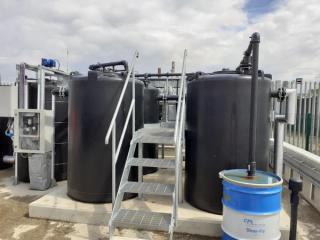
Surface water pollution risk assessment (H1 assessment)
- Client Name
- UK clients
- Location
- UK

Challenge
A risk assessment is required by the Environment Agency (EA) when applying for a bespoke permit that includes discharging hazardous pollutants to surface water, or if a variation of an existing permit is required to cover an increase in quantity and/or concentration of hazardous pollutants to surface water under the Environmental Permitting Regulations.
The client’s challenge involved meeting Environment Agency regulations when applying for permits to discharge hazardous pollutants into surface water. It includes conducting risk assessments, gathering accurate data, and addressing environmental impact concerns while complying with permitting requirements.
Solution
SLR has undertaken several surface water pollution risk assessments (also referred to as H1 assessments) for clients in various sectors, including:
• Waste and recycling (including landfill sites)
• Food and beverage
The purpose of a risk assessment is to quantify the environmental impact of discharging hazardous pollutants to a receiving watercourse, and assess whether it is liable to cause pollution. This includes discharging to freshwaters, estuaries and coastal wasters, and sewers.
Impact
This project ensured the client complies with environmental regulations and improves data quality for hazardous pollutant assessments. Measurable outcomes include regulatory compliance, and reduced environmental risks, benefiting both the client and the local community.

